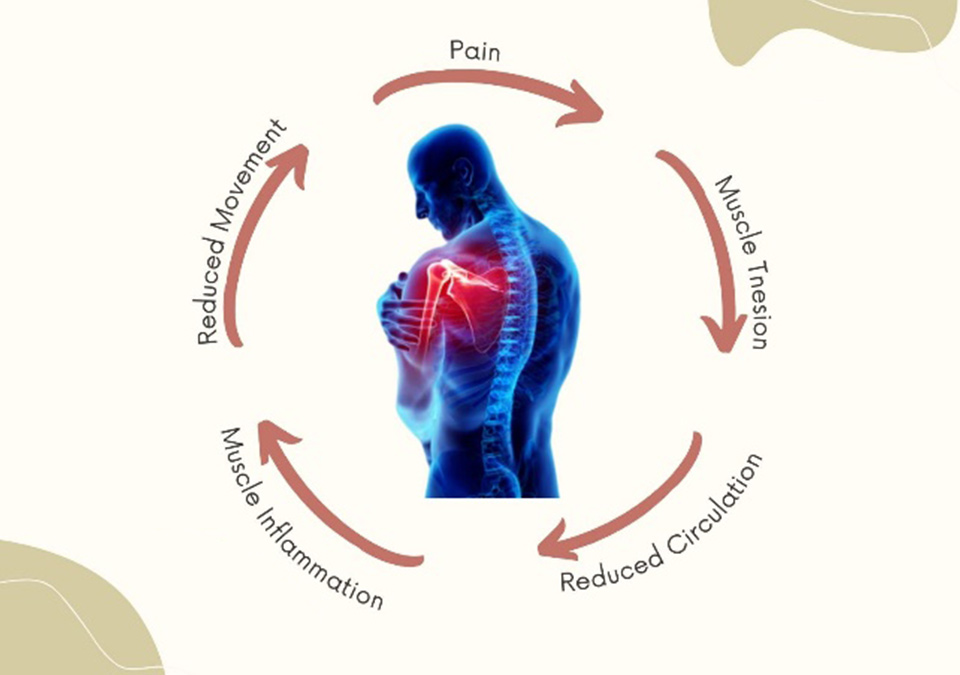A car accident, a dietary change, a stressful event, or exercising with the wrong form – these are all factors that can trigger tension throughout your body. Over time, this tension can progress to such a severity that requires the help of a healthcare professional to relieve. Understanding how muscular tension begins and progresses is key in restoring relaxation and balance in your body.
Muscular tension doesn’t suddenly occur on its own. Initially, something happens that leads to increased muscle tone. That can be anything from emotional stress or a physical injury, but regardless of the cause, the result is the same – local inflammation that limits your body’s ability to flush out extra toxins and wastes in those tissues. This reduces how much oxygen (via blood supply) those tissues receive, causing fluid retention and swelling.

Swelling, toxin buildup, and lack of oxygen supply results in discomfort and pain in the affected area. When one area of your body is aching, you’ll tend to compensate with another muscle. For example, tension in your back that limits movement can result in overly twisting and turning the neck, such as when driving. This overuse will result in more discomfort and pain, but now it’s in your neck. Welcome to the Pain-Tension Cycle – enjoy the ride!
 Having this ongoing muscle tension is also stressful for your brain because of the constant stream of information going through your nervous system. You’re aware of the pain every time you use that affected muscle area. Your brain will unfortunately remember this pain cycle, and will now learn to constantly hold those muscles tight as a form of protection from further injury.
Having this ongoing muscle tension is also stressful for your brain because of the constant stream of information going through your nervous system. You’re aware of the pain every time you use that affected muscle area. Your brain will unfortunately remember this pain cycle, and will now learn to constantly hold those muscles tight as a form of protection from further injury.
You now have overactive, hyper-toned muscles in one area, and underactive muscles in the surrounding areas, creating muscular imbalances. A common example is having too much back tension and an overarched spine, resulting in lengthened but weakened abdominals. The solution is to stretch and soothe the back muscles while strengthening the abs, but this
process takes time. But what happens if this issue is left unaddressed? It will progress into further detrimental changes throughout your body that are harder (but still possible) to treat. This will be discussed in the next post of this three-part series, Setting the Tone.

